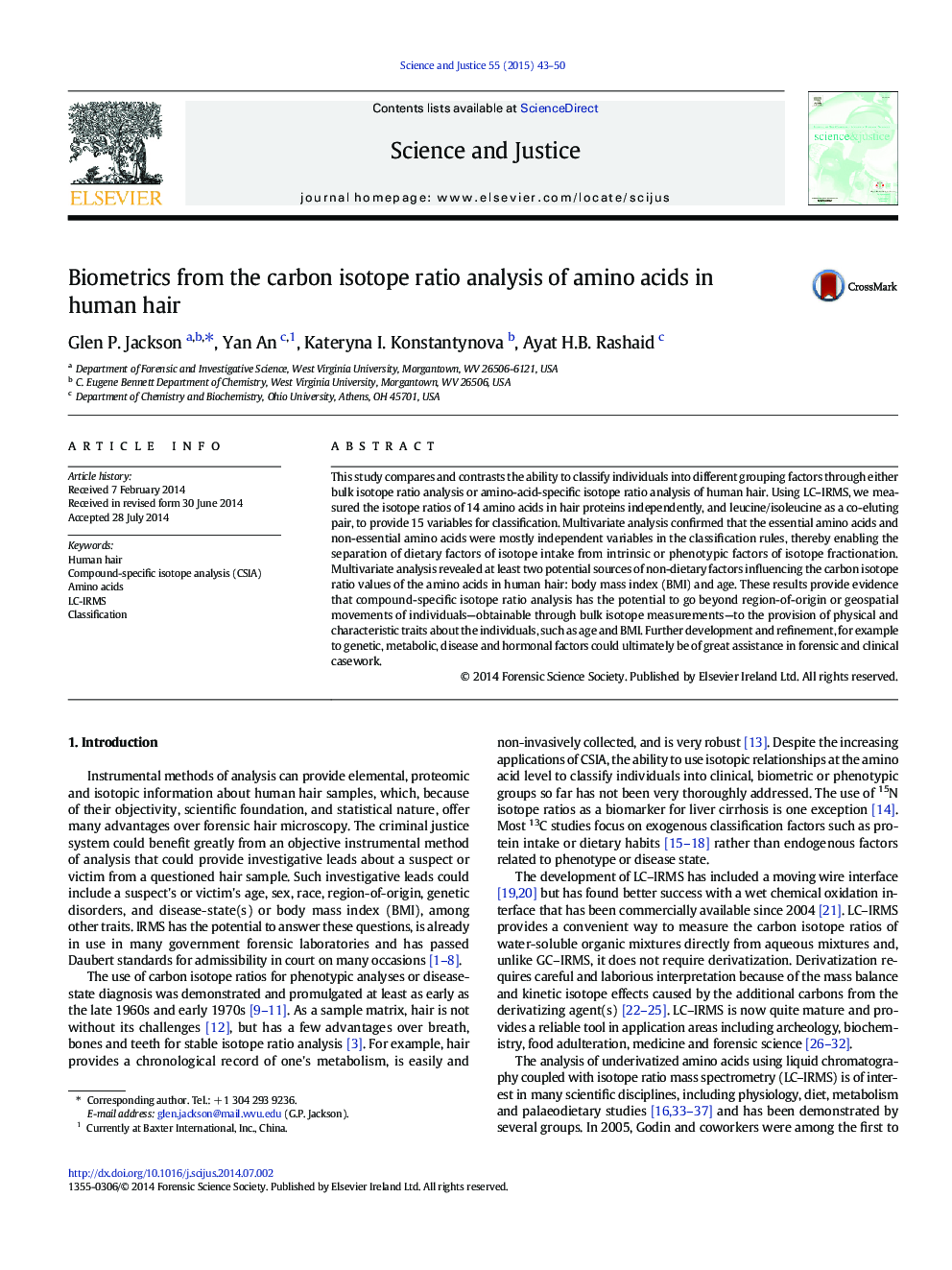| Article ID | Journal | Published Year | Pages | File Type |
|---|---|---|---|---|
| 106967 | Science & Justice | 2015 | 8 Pages |
•Multivariate analysis of compound-specific isotope analysis (CSIA) of amino acids in human hair•Demonstration that essential and non-essential amino acids converge to orthogonal principal components when explaining the variance between individuals•Demonstration that CSIA of amino acids can be used to classify groups of people based on body mass index (BMI), age and dietary intake
This study compares and contrasts the ability to classify individuals into different grouping factors through either bulk isotope ratio analysis or amino-acid-specific isotope ratio analysis of human hair. Using LC–IRMS, we measured the isotope ratios of 14 amino acids in hair proteins independently, and leucine/isoleucine as a co-eluting pair, to provide 15 variables for classification. Multivariate analysis confirmed that the essential amino acids and non-essential amino acids were mostly independent variables in the classification rules, thereby enabling the separation of dietary factors of isotope intake from intrinsic or phenotypic factors of isotope fractionation. Multivariate analysis revealed at least two potential sources of non-dietary factors influencing the carbon isotope ratio values of the amino acids in human hair: body mass index (BMI) and age. These results provide evidence that compound-specific isotope ratio analysis has the potential to go beyond region-of-origin or geospatial movements of individuals—obtainable through bulk isotope measurements—to the provision of physical and characteristic traits about the individuals, such as age and BMI. Further development and refinement, for example to genetic, metabolic, disease and hormonal factors could ultimately be of great assistance in forensic and clinical casework.
